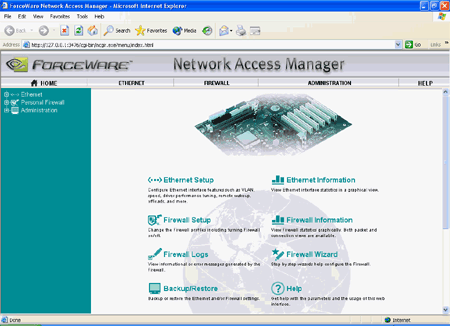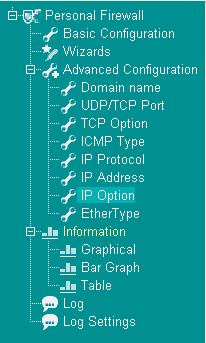With more individuals jumping on board with
broadband Internet
connections, it's very important to safeguard your PC against possible worm and virus attacks, and
that is where nVIDIA's nForce3 Ultra hardware firewall comes in. nVIDIA has taken it upon
themselves to include a hardware firewall within its nForce2-Ultra400Gb, nForce3-250Gb and nForce3 Ultra
chipsets. If configured properly, this should provide consumers
of these systems with some protection from the nasties of the Internet.

To access nVidia's Firewall functions,
double click on the "nVIDIA Web-based Interface" icon on
your desktop, or in the programs menu. nVIDIA has organized its Network
Access Manager into three different categories; Ethernet, Firewall and Administration.
Clicking on any of the headings
or links in the main window changes the menu to the left
which gives you detailed controls over a variety of settings.

For instance, selecting the
Firewall Setup gives you the following options shown above. You can use nVIDIA's defined levels
(which is recommended for novice users), or configure things yourself.
The hardware firewall allows you to
configure what ports are opened, closed or in stealth mode. Once changes are made,
the network interface needs to be restarted. Simply give your PC a few
minutes to work it all out, and you're set. If you suspect any suspicious activity
you can always look things up in the firewall logs.
Please note
that nVidia's onboard hardware
firewall is not enabled by default. With the release of SP2
this shouldn't be much of an issue. To initiate it, you'll need to access the
Network Access Manager and turn it on. Once the nVIDIA hardware firewall is initiated, it should offer
a good degree of protection for your PC against the most common attacks and
worms. It won't stop everything, but it is certainly better than leaving a
PC unprotected.
